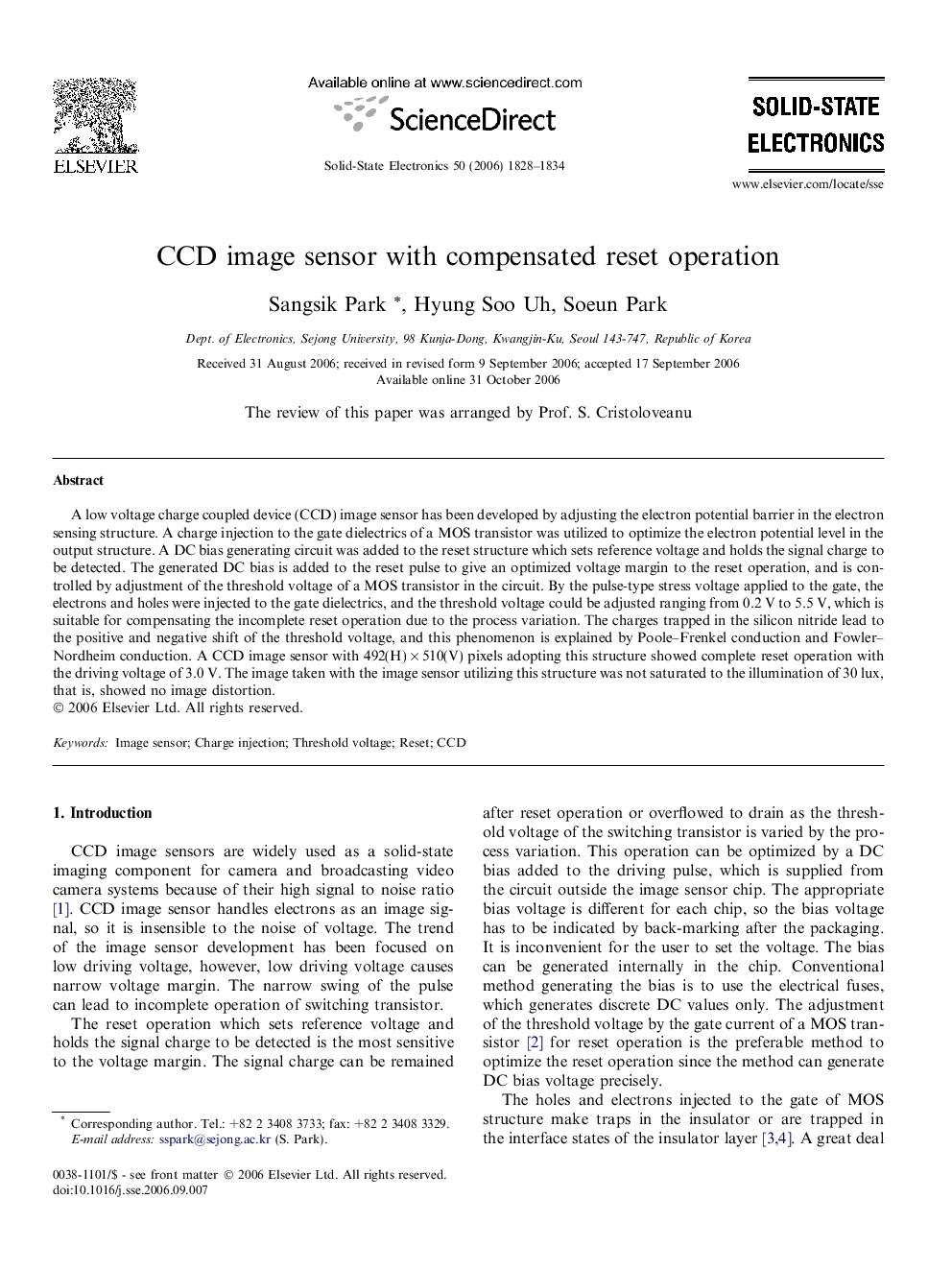| Article ID | Journal | Published Year | Pages | File Type |
|---|---|---|---|---|
| 753599 | Solid-State Electronics | 2006 | 7 Pages |
A low voltage charge coupled device (CCD) image sensor has been developed by adjusting the electron potential barrier in the electron sensing structure. A charge injection to the gate dielectrics of a MOS transistor was utilized to optimize the electron potential level in the output structure. A DC bias generating circuit was added to the reset structure which sets reference voltage and holds the signal charge to be detected. The generated DC bias is added to the reset pulse to give an optimized voltage margin to the reset operation, and is controlled by adjustment of the threshold voltage of a MOS transistor in the circuit. By the pulse-type stress voltage applied to the gate, the electrons and holes were injected to the gate dielectrics, and the threshold voltage could be adjusted ranging from 0.2 V to 5.5 V, which is suitable for compensating the incomplete reset operation due to the process variation. The charges trapped in the silicon nitride lead to the positive and negative shift of the threshold voltage, and this phenomenon is explained by Poole–Frenkel conduction and Fowler–Nordheim conduction. A CCD image sensor with 492(H) × 510(V) pixels adopting this structure showed complete reset operation with the driving voltage of 3.0 V. The image taken with the image sensor utilizing this structure was not saturated to the illumination of 30 lux, that is, showed no image distortion.
